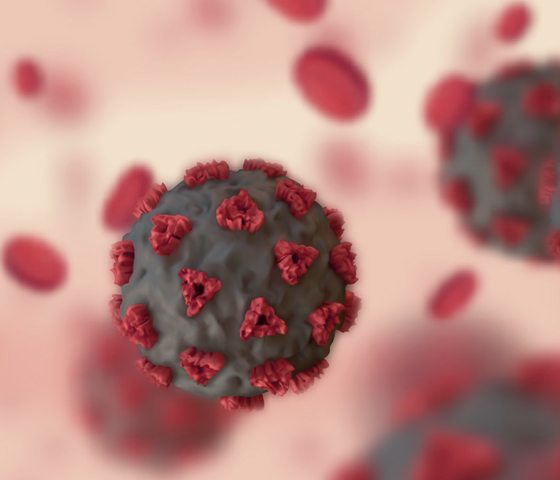宿主遺伝学と免疫応答プロファイリング

宿主遺伝学の調査
宿主感受性に関連する根底にある遺伝因子を明らかにし、個々の免疫系の応答をプロファイリングすることは、COVID-19などの感染症の複雑さを解明し、将来の治療標的を明らかにするのに役立つ可能性があります。疾患重症度に関連する遺伝的バリアントを同定し、炎症性サイトカイン、T細胞、およびNK細胞遺伝子発現シグネチャーなどの免疫応答の違いを研究することが重要です。次世代シーケンサー(NGS)とマイクロアレイのテクノロジーは、研究者が宿主の遺伝子変異を調べ、免疫反応を促進する分子メカニズムを特徴づけるのに役立ちます。
イルミナのNGSとアレイテクノロジーを使用して宿主リスクと免疫応答を研究する主な利点は次のとおりです。
- 多様なサンプルセットをスクリーニングするためのスケーラビリティと柔軟性を備え、ハイスループットとロースループットのオプションに対応
- 宿主の遺伝子変異を解析し、免疫転写産物とエピジェネティックなシグネチャーをプロファイリングするためのマルチオミクスアプローチを可能にするソリューション
- プロジェクトの規模に合わせてデータ解析と解釈ソリューションを選択
宿主遺伝学と免疫応答プロファイリング研究の手法
| アプリケーション | 目標 | 推奨される手法 |
|---|---|---|
| 宿主遺伝学研究 |
|
|
| 宿主免疫応答プロファイリング |
|
|
| マイクロバイオームと宿主応答 |
|
SARS-CoV-2の同定
COVIDSeq Assay(96サンプル)は、SARS-CoV-2の既知の株と新規株の両方を臨床研究ラボで同定するのに役立つように設計された、ロースループットからミッドスループットのNGSアッセイです。主なワークフロー
ウェビナー:COVID-19宿主遺伝学イニシアチブ
Mark Daly, PhDが、COVID-19の疾患感受性と重症度に対する宿主遺伝学の寄与を特定するグローバルな取り組みについて語ります。
ウェビナーを閲覧ゲノミクスを使用して、COVID-19宿主の遺伝的変異性を研究する
エディンバラ大学のDr. Lee Murphyが率いるコアラボは、SARS-CoV-2感染患者の疾患進行と転帰における宿主の遺伝的多様性を研究するため、ゲノミクス手法を活用しています。チームと協力者は、DNAサンプルの遺伝子型判定とWGSのほか、NextSeq 2000システムでのmRNAシーケンスも実行します。
動画を視聴
メチロームと臨床転帰の関係
メチル化アレイは、COVID-19やその他の感染症の研究に新たな次元を切り拓きます。特集記事
英国におけるCOVID-19研究のためのイルミナのゲノムシーケンス
重症患者から得られたデータは、感受性に関する遺伝的要因を理解する手助けとなる可能性があります。全ヒトゲノムのシーケンスでは、COVID-19パンデミックが一部の人にとって生命を脅かすのに、他の人にとっては生命を脅かさない理由を説明するのに役立つ、遺伝的変異を同定できる可能性があります。
記事を読むCOVID-19宿主遺伝学と免疫応答研究のための環境
BaseSpace Correlation Engineは、重要な細胞シグナル伝達と免疫システムのパスウェイ、バイオマーカー、および潜在的な薬剤候補のリードに関する仮説の検証を可能にし、COVID-19の危機に対処するのに役立ちます。
記事を読む関連出版物
COVID-19に関連するDNAメチル化の変化
ケーススタディを読むCOVID-19の免疫学:サイエンスの現状
レビューを読む重症COVID-19に罹患する若年男性における遺伝的バリアントの存在
記事を読むCOVID-19の重症度は、シングルセル解析で特定された気道上皮と免疫細胞の相互作用が寄与している
記事を読む宿主遺伝学と免疫応答研究に適したソリューションを見つけるための支援を提供します。
関連ソリューション
マイクロバイオーム解析
ヒトの体内外にある微生物群集を研究することにより、研究者は健康や疾患における微生物の役割を理解することができます。
ショットガンメタゲノミクス
所定の複雑な微生物サンプルに含まれるすべての生物のすべての遺伝子を包括的に採取できるDNA配列法。
複合疾患研究
複雑な疾患は、遺伝的要因と環境的要因の組み合わせから生じます。アレイおよびシーケンステクノロジーは、これらの疾患の基盤を明らかにするのに役立ちます。
細胞および分子生物学
次世代シーケンサー(NGS)で、従来の手法を超えた細胞および分子生物学の研究を発展させます。
シングルセルRNA-Seq
シングルセルRNA-Seqを活用することで、研究者は、バルクサンプリングで見落とされがちな細胞の違いを調べることができます。